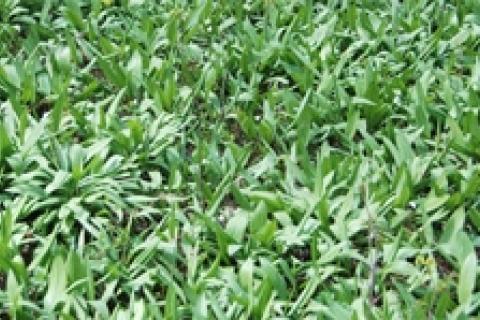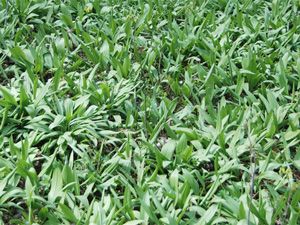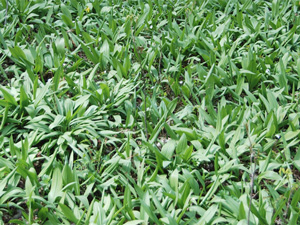

Out of all the edible wild vegetation that grows in our nearby forests one of the most overlooked plants would have to be ramps or wild leeks. These wild leeks are a type of wild-growing onion with a wonderful roasted garlic aroma found growing throughout the forest floor. These leeks generally are characterized by having fresh green leaves attached to the small white bulb.
In regions that have a good harvest of wild leeks, a folk medicine reputation has been associated with these wild edibles to be powerful healers. In all actuality wild leeks are high in Vitamins C and A, and full of beneficial minerals. To add to this wild leeks have also been known to have a similar cholesterol-reducing capacity as to that of garlic and other members of this family.
Ramps or wild leeks are a native plant to many different regions of the United States, ranging from the Appalachian Mountains to the Great Lakes region. Generally a good place to start looking for these wild leeks is in moist, open hardwood forests or in and around small wooded streams harboring many shading areas.
The seasons for harvesting ramps seem to be almost endless with early spring being especially good for young milder-tasting leeks while late summer, early fall bringing big, robust flavored ramps. Don't let their odorous reputation scare you from trying these delicacies; ramps or wild leeks are served in some of the finest restaurants in America, with no complaints.
Identification Tips
Ramps/wild leeks are very easily identifiable depending on what time of the year you decide to harvest them. In spring ramps are the first green vegetables to emerge from the ground in the woods. Making them easy to spot and identify from other potentially dangerous plants. The wild leeks that you are looking for should have 2 to 3 broad, smooth green leaves with an unmistakable garlic onion odor. The leaves should come directly from the ground and are not connected to any sort of stem or trunk. The point where the leaves enter the ground should start to turn a maroon color and eventually feed into a large white bulb connected to a cluster of hair-like roots.
During the summer and fall, ramps will not longer be able to be identified by their leaf structures. During this time of year the wild leeks will be in the flowering stage. To identify leeks look for a small maroon colored stalk connected to a typical onion family flower. Traditional wild onions will have a pink to purple flowers while wild leeks will have white flowers.
Harvesting Wild Leeks
When harvesting good wild leeks there are a few key features you should look for in the plants. First off wild leeks should have two or three bright green leaves with the small white bulb attached by a purplish stem. The key is to find leeks that are as fresh as possible. Yellowing or withering in the leaves is a sign that these particular leeks have been in the ground too long. Ideally the leaves should be around 6 inches long and 2 inches wide, for the mildest flavor. You should be careful on the amount of leeks you intend on harvesting in one area.
Small patches of leeks can be over-harvested leaving nothing for the upcoming season. Depending on what you plan on using the leeks for, you might just harvest the leaves leaving the bulb in the ground. Selective harvesting in this way is good idea seeing as these remaining bulbs will sprout new leaves the following year.
In most cases when you harvest ramps or wild leeks they will be muddy from the field and will need to be cleaned and trimmed. Taking the time to properly clean and identify each leek that you have picked is a wise choice. A papery wrapper leaf (and some dirt) may surround the bulb when you pull the plants from the soil. This coating should be removed when you get the leeks home and begin to clean them up.
 |
| Wild leek's flavor is very similar to onions, particularly like scallions, but with a wilder touch added in. |
Additionally any roots that were pulled with the plant should be trimmed off along with their button attachment. Be careful to look for any yellowing or slimy textures to the plants you have picked. If you happen to come across any leeks with these signs simply discard the leek and move on to the next. Once trimmed and cleaned the entire plant is choice for eating.
Storing Ramps and Wild Leeks
After you have cleaned and trimmed the leeks you have picked, store them in the refrigerator as you would green onions. Because of their small size it is a good idea to pack them into a plastic bag so that they do not dry out. If you happen to have one of those nifty home vacuum sealer devices then a good idea would be to package up a few leeks together and freeze them for later use. With the leek leaves it is a good idea to use them as soon as possible after harvest.
Preparation
Ramps or wild leeks can be used in a wide variety of uses in the kitchen. Wild leek's flavor is very similar to onions, particularly like scallions, but with a wilder touch added in. For cooking they can be used interchangeably in any recipe that calls for scallions or green onions. Slicing leeks thin gives an amazing flavor twist to salads or stir-frys, while the more daring love their earthy flavor raw.
in all these delicacies pop right up from the ground just asking to be pulled on your walk home from fishing. Pluck them from the ground this year and try the leeks stuffed inside a trout on the grill. You will find it a most rewarding meal.
- 20605 views

